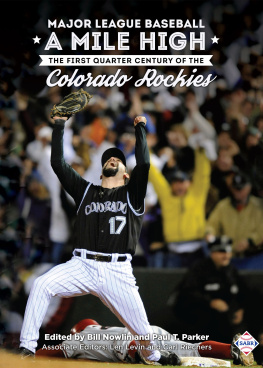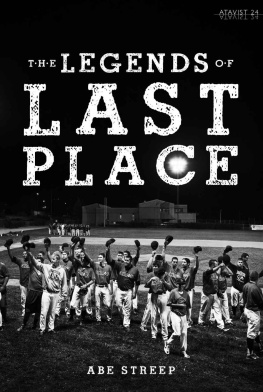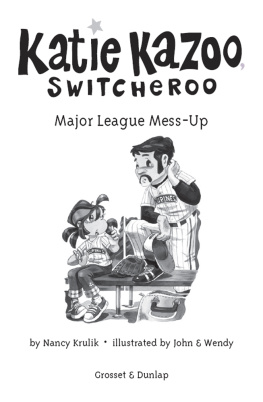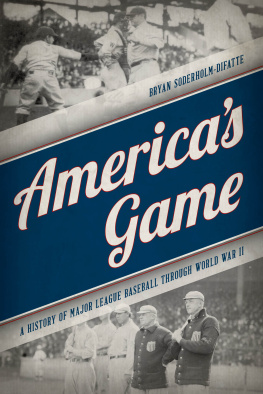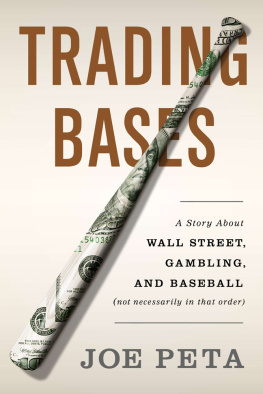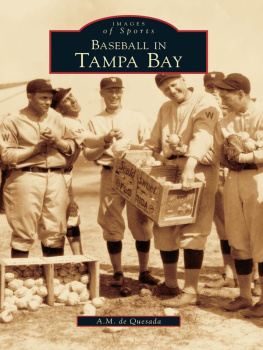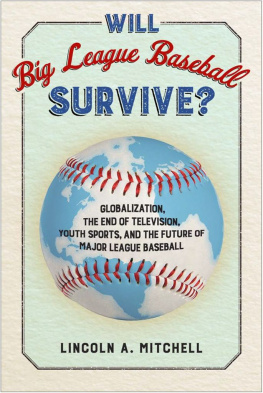Jonah Keri - The Extra 2%: How Wall Street Strategies Took a Major League Baseball Team from Worst to First
Here you can read online Jonah Keri - The Extra 2%: How Wall Street Strategies Took a Major League Baseball Team from Worst to First full text of the book (entire story) in english for free. Download pdf and epub, get meaning, cover and reviews about this ebook. year: 2011, publisher: ESPN, genre: Detective and thriller. Description of the work, (preface) as well as reviews are available. Best literature library LitArk.com created for fans of good reading and offers a wide selection of genres:
Romance novel
Science fiction
Adventure
Detective
Science
History
Home and family
Prose
Art
Politics
Computer
Non-fiction
Religion
Business
Children
Humor
Choose a favorite category and find really read worthwhile books. Enjoy immersion in the world of imagination, feel the emotions of the characters or learn something new for yourself, make an fascinating discovery.

- Book:The Extra 2%: How Wall Street Strategies Took a Major League Baseball Team from Worst to First
- Author:
- Publisher:ESPN
- Genre:
- Year:2011
- Rating:4 / 5
- Favourites:Add to favourites
- Your mark:
- 80
- 1
- 2
- 3
- 4
- 5
The Extra 2%: How Wall Street Strategies Took a Major League Baseball Team from Worst to First: summary, description and annotation
We offer to read an annotation, description, summary or preface (depends on what the author of the book "The Extra 2%: How Wall Street Strategies Took a Major League Baseball Team from Worst to First" wrote himself). If you haven't found the necessary information about the book — write in the comments, we will try to find it.
Jonah Keri: author's other books
Who wrote The Extra 2%: How Wall Street Strategies Took a Major League Baseball Team from Worst to First? Find out the surname, the name of the author of the book and a list of all author's works by series.
The Extra 2%: How Wall Street Strategies Took a Major League Baseball Team from Worst to First — read online for free the complete book (whole text) full work
Below is the text of the book, divided by pages. System saving the place of the last page read, allows you to conveniently read the book "The Extra 2%: How Wall Street Strategies Took a Major League Baseball Team from Worst to First" online for free, without having to search again every time where you left off. Put a bookmark, and you can go to the page where you finished reading at any time.
Font size:
Interval:
Bookmark:
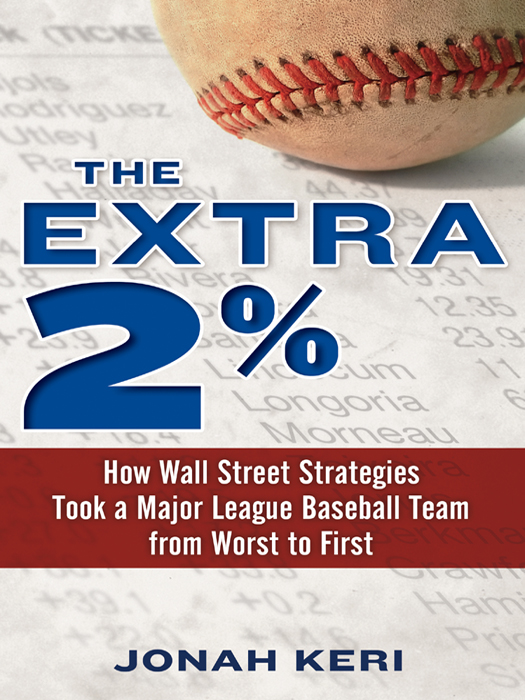
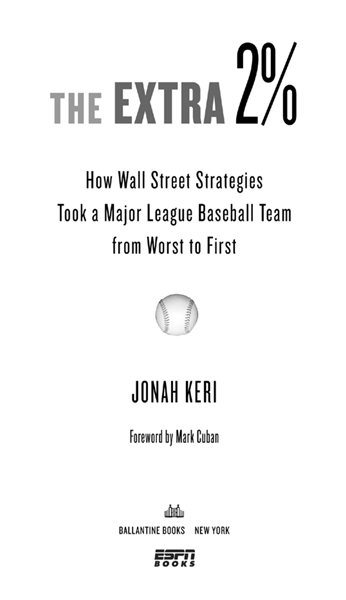
Copyright 2011 by Jonah Keri
Foreword copyright 2011 by Mark Cuban
All rights reserved.
Published in the United States by ESPN Books, an imprint of ESPN, Inc., New York, and Ballantine Books, an imprint of The Random House Publishing Group, a division of Random House, Inc., New York.
B ALLANTINE and colophon are registered trademarks of Random House, Inc.
The ESPN Books name and logo are registered trademarks of ESPN, Inc.
LIBRARY OF CONGRESS CATALOGING-IN-PUBLICATION DATA
Keri, Jonah.
The extra 2%: how Wall Street strategies took a major league baseball team
from worst to first / Jonah Keri.
p. cm.
eISBN: 978-0-345-51773-9
1. BaseballEconomic aspects. 2. Sports franchisesEconomic aspects
FloridaTampa bay. 3. Tampa Bay Rays (Baseball team) I. Title.
GV880.K48 2011
331.8811796357dc22 2010054155
www.ballantinebooks.com
www.espnbooks.com
v3.1
For Ellis, Thalia, and the esteemed Dr. F
 When I bought the Dallas Mavericks in 2000, they were coming off one of the worst stretches in NBA history. In the twenty years leading up to that point, the Mavs had won just 40 percent of their games. We had work to do.
When I bought the Dallas Mavericks in 2000, they were coming off one of the worst stretches in NBA history. In the twenty years leading up to that point, the Mavs had won just 40 percent of their games. We had work to do.
One of the first steps we took was to invest in the product. Sure, that meant paying more for player talent than most other teams. But we made our investments count in many other ways too. We spared no expense on player facilities, even in the visiting locker room. Players notice these things. Every time another team rolls into town, every player can see what weve built, talk to our guys, and file that knowledge away for the future. To refine players skills, we also hired the biggest coaching staff in the league. That way, when a big man needs extra work in the post or a point guard needs to work on his ballhandling, weve got specialized instructors who can take them aside and help develop their skills.
Having spent my whole career building technology companies, I was eager to bring that experience to bear with the Mavs. Weve hired some of the brightest minds in basketball analysis and built a database that tracks everything from player personnel to game strategies. Wayne Winston, a professor at my alma mater, Indiana University, developed a proprietary measure that allows us to gauge the impact each player has on the court, beyond the usual box-score stats. More than just developing our own metrics, weve also learned a lot about how best to use them. While many teams use stats primarily as a player acquisition tool, we bring our analysts and coaches together. One of our top analysts, Roland Beech, travels to every game, working closely with our coaching staff on everything from lineups to set plays. Critically, everyone in the organizationfrom our best number crunchers to our most experienced coachesbuys into the system.
In the ten years since I bought the Mavs, weve won 69 percent of our regular-season games and made the playoffs every season. Players like Dirk Nowitzki deserve the lions share of the credit for that progressionDirk has evolved into a true NBA superstar, with other homegrown players developing alongside him or serving as valuable trade chips. But pure talent is never enough. Everything that we do revolves around the idea of finding that little edge, something that can transform our team from good to very good, and from very good to great.
One Major League Baseball team follows that same philosophy better than any other: the Tampa Bay Rays. When Stuart Sternberg turned over day-to-day control of the team to Matt Silverman and Andrew Friedman, he knew he was trusting his investment to two guys with limited baseball experience. But Sternberg felt that smarter thinking could trump their lack of experience. Silverman and Friedman had shown their potential while working on Wall Street. They could think about baseball in a different way, churning out ideas that their competitors had never seen or tried before. Like the Mavs, the Rays reached out to some of the sharpest analytical minds in the baseball world, bringing them into the fold. In Joe Maddon, they found a manager who wasnt merely accepting of new ideashe thrived on them.
I see a lot of myself in Sternberg, Silverman, and Friedman. They have accomplished so much in such a short amount of time, turning a perennial loser into one of the top teams in baseball and growing the Rays into one of the model franchises in all of professional sports. Yet no matter what they do in the future, whether its land a more lucrative TV deal, build a new ballpark, even win a World Series, theyll always trail well behind the Yankees and Red Sox in terms of revenue streams, market size, and national cachet. Despite that reality, they embrace that challenge every day and continue to prove themselves on and off the field. Like me, theyre always looking for new, subtle ways to beat the competition.
The Tampa Bay Rays are a shining example to anyone, whether youre running a professional sports franchise or a Fortune 500 company or a neighborhood gas station. Every day they look up and see the two biggest names in their industry, standing right on their turf. So they dream up new ideas, whether its to find a new relief pitcher, improve their brand, or build their profit margin. No one idea is likely to make a huge difference. But collectively, those ideas make the difference between winning and losing, or between winning a little and winning a lot. Those ideas, working together, result in that little edge the Rays are constantly looking forthat all the best operators are constantly looking for.
No matter what kind of business youre trying to run, you should read this book. Then you too can understand what the extra 2% is all about.
M ARK C UBAN
Dallas, Texas
September 2010
I used to tell people I played for the Devil Rays and theyd ask, Who are the Devil Rays? Now, I think they know who we are.
B. J. U PTON
 On the first day of spring training in February 2008, Scott Kazmir scanned his teams clubhouse, then swiveled his head back toward a pack of waiting reporters. The assembled media members wanted to know what the young pitching ace thought was possible for the coming season. Really, they wanted their first sound bite of the year. Kazmir was happy to oblige.
On the first day of spring training in February 2008, Scott Kazmir scanned his teams clubhouse, then swiveled his head back toward a pack of waiting reporters. The assembled media members wanted to know what the young pitching ace thought was possible for the coming season. Really, they wanted their first sound bite of the year. Kazmir was happy to oblige.
Whats possible? Play in October, thats possible, Kazmir proclaimed. We have what it takes to win here.
There is no more optimistic moment in all of sports than the first day of spring training. Refreshed after a long off-season, young men descend on sprawling complexes in Florida and Arizona to catch up with old friends and make new ones. The sun beams down on freshly mown grass. Players slip into freshly laundered uniforms, feel the familiar pinch of their trusty spikes. The gate swings open, and seventy-five pairs of fresh legs saunter onto the field. At that moment, anything is possible. In spring training, every team is undefeated.
In that vein, Kazmirs prediction was typical. The flame-throwing left-hander had been hugely successful from the time he first stepped onto a Little League diamond. At twenty-four years old, he was a first-round draft pick whod already matured into an elite major league talent, an All-Star, the ace of a major league pitching staff, the booty in what was considered one of the most one-sided baseball trades of the decade. Young, talented, handsome, and marketable, he was a few months from signing a contract big enough to leave him set for life. If any baseball player was going to be full of preseason bravado, Kazmir seemed a reasonable choice.
Font size:
Interval:
Bookmark:
Similar books «The Extra 2%: How Wall Street Strategies Took a Major League Baseball Team from Worst to First»
Look at similar books to The Extra 2%: How Wall Street Strategies Took a Major League Baseball Team from Worst to First. We have selected literature similar in name and meaning in the hope of providing readers with more options to find new, interesting, not yet read works.
Discussion, reviews of the book The Extra 2%: How Wall Street Strategies Took a Major League Baseball Team from Worst to First and just readers' own opinions. Leave your comments, write what you think about the work, its meaning or the main characters. Specify what exactly you liked and what you didn't like, and why you think so.


